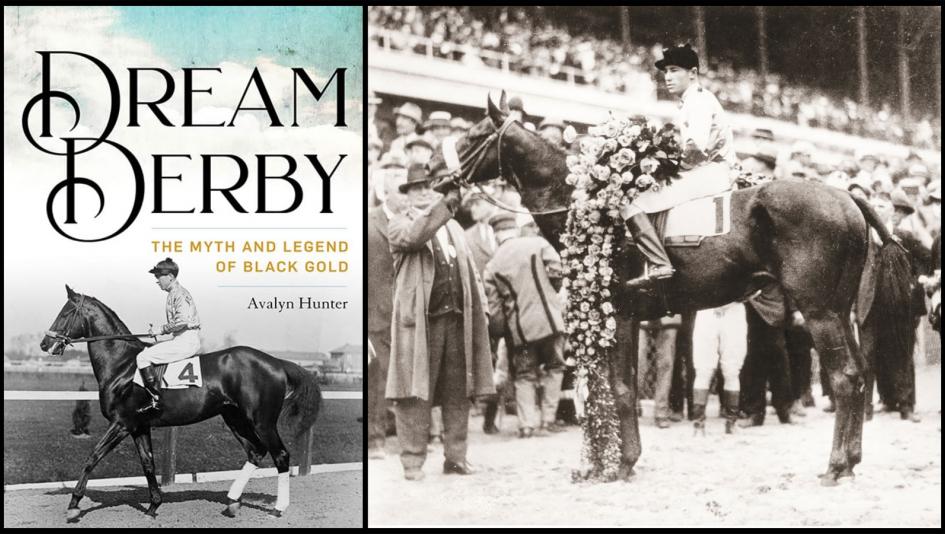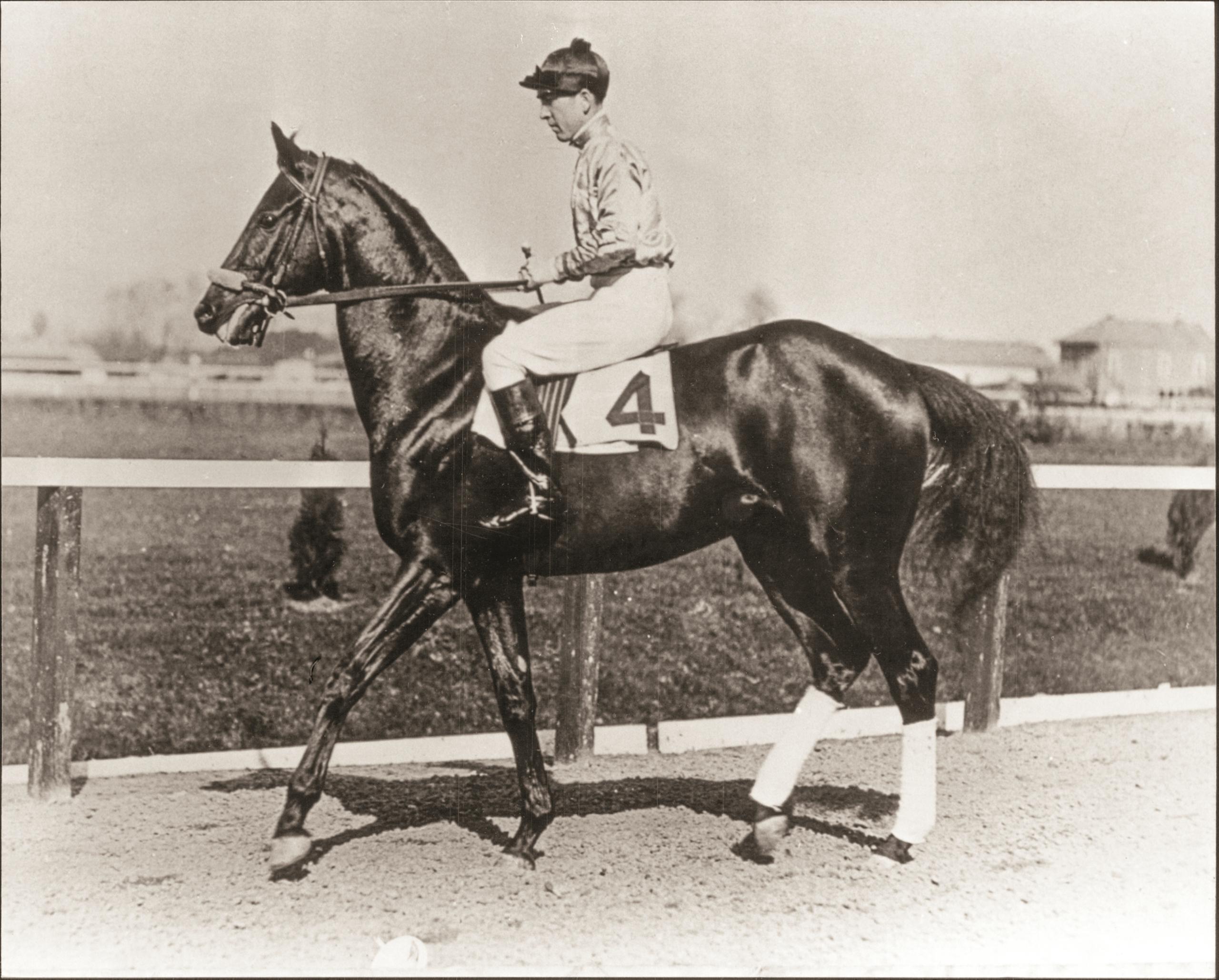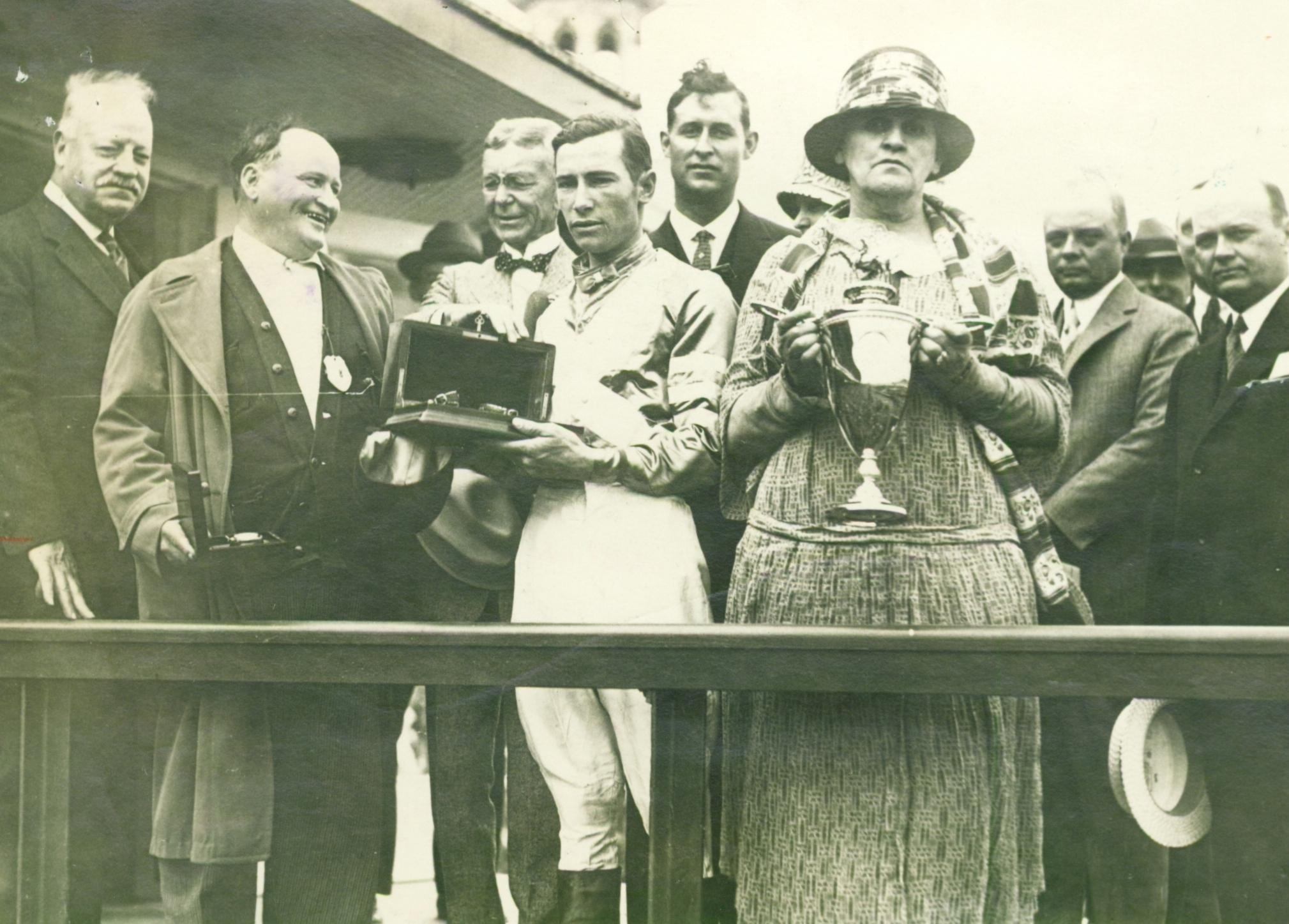
Thoroughbred Aftercare Alliance Success Stories: A New Journey for Andrea and Britta

Few horses touched the heart like the Black Gold did. Thanks to Marguerite Henry’s 1957 book, this black colt with the little white star was a childhood favorite of generations of racing fans, his triumphant, yet tragic life a poignant reminder of why we love this sport and its equine athletes.

Aside from Henry’s book and the occasional article on the 50th Kentucky Derby winner, Black Gold remains a figure shrouded in legend, at times more of a storybook character than an accomplished Thoroughbred.
Avalyn Hunter’s new book, “Dream Derby: the Myth and Legend of Black Gold,” seeks to find the true Black Gold and reveals more about his owner Rosa Hoots, trainer Hanley Webb, and jockey John James ‘J.D.’ Mooney.
Hunter, a pedigree expert and author of five books, started crafting this long-form look at the 1924 Kentucky Derby back in 2019 because “it just nudged me that this was the right time, that given how long it would take to get a book out, that it would come out at about the right time for the celebration of that anniversary.”
“Of course, I had read Marguerite Henry’s historical fiction work on that as a child, but there just seemed like there’s got to be more to the story,” Hunter recalled. “Because no offense to Ms. Henry, whose work was very well-beloved, but one person, [trainer Hanley] Webb, comes across as the unwitting villain of the piece. And then the unbelievable details about a teenage J.D. Mooney giving up everything just to ride this one horse. Of course, Rosa Hoots really doesn’t come off as much, just very shy and deferential. And I just thought those three people, there had to be a lot more to the story, and it turned out there was.”
The end result of her five years of research takes readers through a bygone era of racing set against a time of racial upheaval and societal change in post-war America, an exploration of how one horse became more than just a tragic name who wore the famed garland of roses.
The legend of Black Gold begins with Al Hoots and the lightning quick mare Useeit, who the prominent Oklahoma cattleman raced as part of his small stable. Contemporary accounts of Black Gold’s backstory in the days leading up to the 1924 Derby shared some fantastical accounts of Hoots’ relationship with the mare, including his supposed vision that she would produce a Kentucky Derby winner, all stories rooted in fact but layered with legend over the intervening years.

To get at the truth, though, meant plowing through “a lot of stories that ended up being republished without proper byline or attribution meant trying to trace down the provenance of a particular story and where it first appeared,” Hunter observed. “For instance, the story that Al Hoots defended Useeit with a shotgun is, as nearly as I could tell from all my tracing down, a story that goes back to Marshall Cassidy, and didn’t even hit print until 1924.”
In addition to exploring Al Hoots and Useeit, the book also explores Rosa Hoots, who picked up where her husband left off and sent his prize mare to Kentucky for a cover by Idle Hour Farm stallion Black Toney. This opportunity came about after an early chance meeting with Col. E.R. Bradley, the breeder and owner behind Idle Hour, who liked Useeit and offered Al Hoots the chance to breed the mare to one of his stallions. Not only does Hunter dive into the facts behind this fortuitous pairing, but she also shares a portrait of Rosa Hoots that incorporates her historical context to understand the woman behind the colt.
“I realized just how remarkable a personage that Rosa Hoots was, because she’s someone who grew up very much caught between two cultures,” Hunter shared. “They [Hoots and her mother Jane Appleby] were remarkable people, and they lived in a pretty fractured time in Tulsa. I did not realize how this time tied into the same period as the Osage killings.”
Hunter’s profile of both Al and Rosa Hoots brings these two pivotal parts of Black Gold’s story out of the dated stereotypes that dotted the coverage of the horse’s career and into a new light, where both are real people with a real love for their horses.
“Dream Derby” also addresses the man who conditioned the son of Black Toney, Hanley Webb. Though Webb had experience with horses through his time as an itinerant cowboy and small-town lawman, his practical experience with Thoroughbreds was close to zero when Al Hoots gave him the job of training his horses.
Webb created his methods through on-the-job experience rather than the inherited knowledge that comes with mentorship, his time in the West shaping how he approached working with Black Gold: “His strength was recognizing, in essence, what he had and being able to evaluate it. He could assess Black Gold’s talent pretty accurately and said, ‘OK, I don’t think my horse can beat that horse just on natural talent, but this is what I can do.’ ”
His unconventional methods raised eyebrows in his time and Henry’s portrayal of the trainer as something akin to a villain did his reputation no favors. Hunter’s research, though, uncovered a different perspective on Hanley Webb.
“I was really surprised when I dug into the time before the Derby, the spring months where Webb was trying to first make sure he had a horse good enough to run, and then second, try to keep him happy and fit during that time,” the author shared. “It really throws another dimension onto his horsemanship, which has often been pretty roundly maligned.”
Hunter also brings J.D. Mooney into focus beyond the star-struck teenager readers might know from Marguerite Henry’s book. Four years into his riding career, an adult Mooney did pursue the mount on Black Gold but had to overcome the grudge Hanley Webb held against him to get the opportunity. Nevertheless, once Mooney got the chance, he made the most of it, his familiarity with Black Gold making all the difference in the 50th Kentucky Derby.
“Dream Derby’s” recounting of the race takes readers deep into Mooney’s and Black Gold’s climactic performance at Churchill Downs, Hunter’s description painting a full-color picture of the two minutes. To recreate their trip, Hunter looked at newspaper coverage of the 1924 Derby as well as a newsreel of the race.
“Thanks to that film as well as the other accounts, I could construct Black Gold’s path pretty well,” she recalled. “I already knew about his dislike for the inside because that had become pretty apparent much earlier. Then, when I was trying to show the rapport between jockey and horse, I never wanted to get into anthropomorphizing the horse, and making him seem something other than what he was, which was a horse. I was trying to make his communication back to the rider, something that could be read in the kinesthetics and the body language of the animal.”
The final chapter covers the colt’s post-Derby years, including his unsuccessful time at stud and then his forced return to the racetrack, which ultimately ends in Black Gold fracturing his leg and being euthanized. Through detailed research and patient storytelling, Hunter takes on the titanic task of giving Black Gold the treatment he deserves with a focus on his life and career rather than his terrible end.
A hundred years on, Black Gold remains a beloved figure thanks to equine storytellers like Marguerite Henry, prolific Derby historian Jim Bolus, and now Avalyn Hunter. He endures because his is “one of the great rags-to-riches stories of the Derby, in that you have these three nobodies of very unlikely backgrounds come together and snatch what was the most important Derby up to that time, the Golden Jubilee, out from under the noses of the Eastern establishment,” the author observed.
“It was a very popular win with, shall we say, the little people, the folks that often feel ignored by the big wheels of their time back then. Besides the fairytale quality of that triumph is also almost the Greek tragedy bit of the ending, the feel of something that was inevitably going to happen, and unfortunately did,” Hunter shared.
The journey from Useeit’s bush track days to Black Gold’s triumphant victory remains compelling to generations of racing fans, and “Dream Derby” is its long overdue reexamination, one that will leave readers grateful for it all, triumph and tragedy.